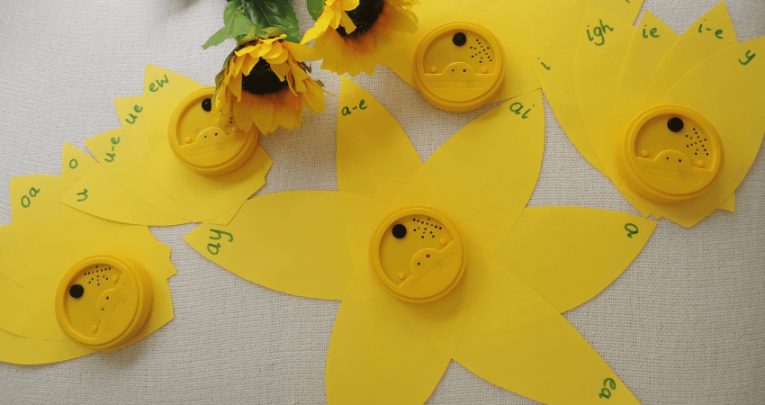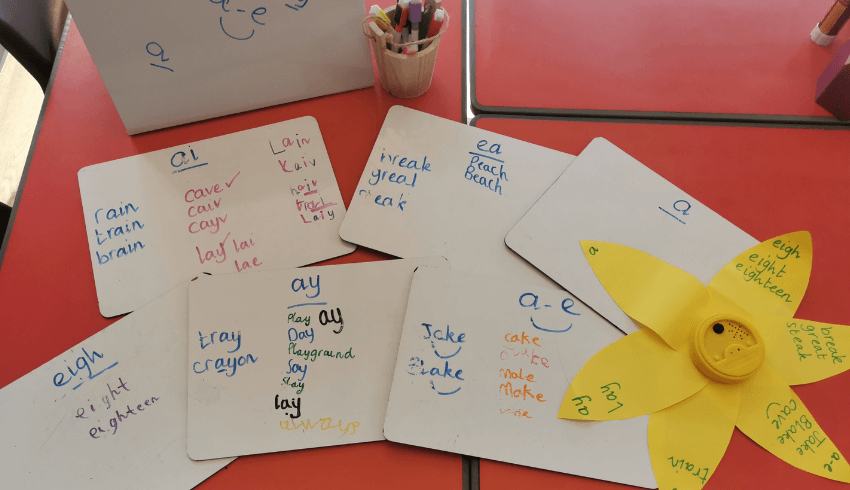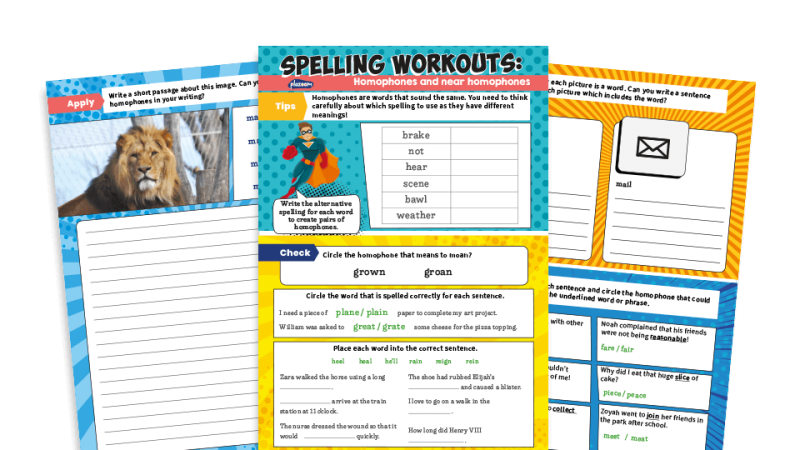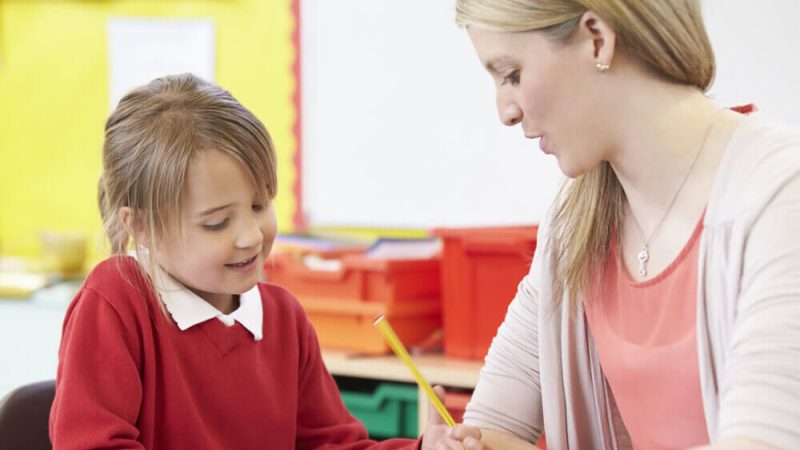Teaching phonics – Sunflower sounds mini project

Add a new dimension to phonics and bring a little sunshine into your classroom with this hands-on sunflower sounds project…

- by Kiran Sunray

Though decoding words is obviously an essential element of teaching phonics, the process includes much more than that.
There are lots of connections that children need to make in order to truly immerse themselves into the world of words and literature, and a key part of this journey is getting to grips with alternative graphemes (one sound that can be written in different ways). These are key touchstones for KS1 children to understand as they develop as readers and writers.
And what better way to introduce this concept than to provide an actual listening experience?
Step 1
Start with noting down the alternative graphemes for the long vowel sounds (phonemes) – a (ai), e (ee), i (igh), o (oa), u (y+oo). Say each vowel out loud for the class and ask them to repeat it. Next, get them to write down some alternative spellings for each sound (e.g. for ‘e’, they could write ee, ea, e-e, ie, y, etc). You can model this on the board, or get them to write the spellings out in their books. By starting with these sounds , you are enabling the children to understand the concept of alternative graphemes, which will then help them make connections to further spelling patterns, rules and homophones.
Step 2
Now that you have a list of alternative graphemes associated with each vowel sound, explain to pupils that they are going to work together to make ‘sound sunflowers’. First, give each pupil one vowel sound to concentrate on – depending on how many pupils you have, there should be a few children working on each sound. This will be useful for group work, later.
Explain that they’ll be recording their chosen sound on a talking tin, which will act as the centre of their sunflower (tins are easy to find online with a quick internet search – I used the ones that record for 10 seconds). It’s best to model this part to show children how to record their sounds – the tins should come with instructions if you haven’t used them before.
Step 3
Once pupils have recorded their vowel sounds, it’s time to make the sunflower petals. Each flower should have enough petals for the alternative graphemes children have written down for their vowel sound (usually around six is sufficient). You could either cut out the petals in advance, or ask children to do it themselves, depending on your class; I used yellow card so they didn’t bend too much under the weight of the talking tins.
Once all the petals are cut out, overlap one end of each petal in a circular design until you have a flower shape. Glue or pin in place, and attach the talking tin to the centre.
Step 4
Now it’s time to add the alternative graphemes you wrote down earlier in the lesson to the sunflower petals. For a recall exercise, you can ask pupils to try and remember the different graphemes they came up with for their vowel sounds without looking at their lists. How many can they remember?
Get the children to write one alternative grapheme for their recorded vowel sound at the tip of each petal. You could always model this process yourself with your own sunflower, should you wish.
Step 5
Finally, once the sunflowers have been populated with their alternative graphemes, ask children – either individually or in groups of vowel sounds – to think of as many words as they can that contain each alternative grapheme. For example, pupils who have been working with i (igh), could write out sigh, sight, light and night on their ‘igh’ petal, and cry, why, try, my and by on their ‘y’ petal, etc.
After a few minutes, you could always get the groups to rotate and swap sounds, adding any new words they can think of to the other sunflowers.

Kiran Sunray is a senior assistant principal, Year 2 teacher, and EYFS, KS1 and English lead. She is also a Primary Trust literacy lead practitioner.







